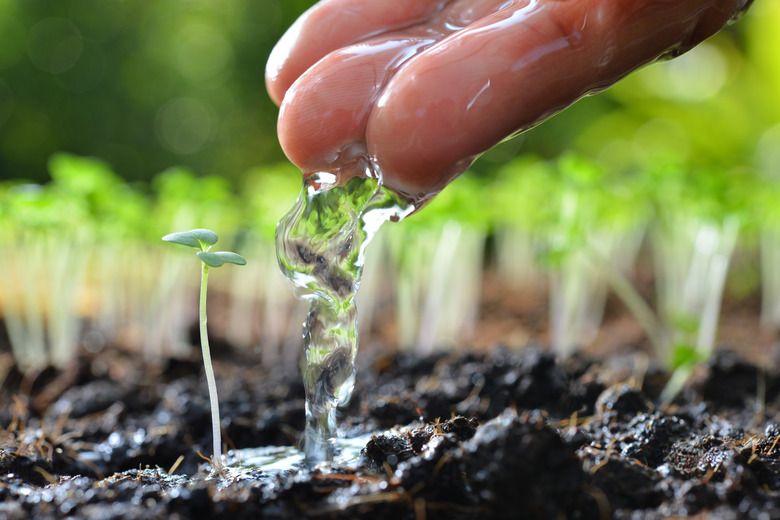How To Calculate A Liquid Limit
Liquid limit describes the approximate water content at which soil begins to behave as a liquid, one of several limits used to define the mechanical properties of soil. A Casagrande device is the primary laboratory tool for testing liquid limits. The tester places soil samples with varying water contents into the cup of the device, then cuts a groove through the sample. The cup is dropped multiple times until soil fills the groove. Use the number of drops along with the water content of the samples to calculate the liquid limit.
Step 1
Draw a chart with two columns and as many rows as you have data points. Label the columns "Number of blows" and "Percent water content." Alternatively, create the same chart using spreadsheet software.
Step 2
Record the number of blows required for each sample in the first column of the chart.
Step 3
Subtract the weight of a dry soil sample from the weight of a wet soil sample and multiply by 100. Divide the result by the weight of the wet sample to get the percent water content for that sample. Perform this calculation for each soil sample and record the results in the second column of your chart next to the number of blows for the sample.
Step 4
Use the log-scale direction of the graph paper as the x-axis and label it "Number of blows." Label the arithmetic scale y-axis "Percent water content." Plot each set of data points from your chart on this graph. Alternatively, create the same graph with spreadsheet software, making sure to set the x-axis to log-scale.
Step 5
Draw a straight line through the data points. If a straight line won't connect all the points, draw a straight line that falls as close as possible to every point.
Step 6
Draw a straight line up from 25 on the x-axis until it reaches your plotted line. Draw another line from this point left to the y-axis. Read the value on the y-axis: this is the liquid limit of your soil.
Things Needed
- Experimental data
- Calculator
- Log-scale graph paper or spreadsheet software
TL;DR (Too Long; Didn't Read)
Calculate the liquid limit from only one soil sample test by dividing the number of blows by 25, raising the result to the power of 0.121 and multiplying by the percent water content. This method isn't as accurate as the multiple sample test.
Cite This Article
MLA
Wakefield, Petra. "How To Calculate A Liquid Limit" sciencing.com, https://www.sciencing.com/calculate-liquid-limit-8596399/. 15 June 2011.
APA
Wakefield, Petra. (2011, June 15). How To Calculate A Liquid Limit. sciencing.com. Retrieved from https://www.sciencing.com/calculate-liquid-limit-8596399/
Chicago
Wakefield, Petra. How To Calculate A Liquid Limit last modified March 24, 2022. https://www.sciencing.com/calculate-liquid-limit-8596399/
